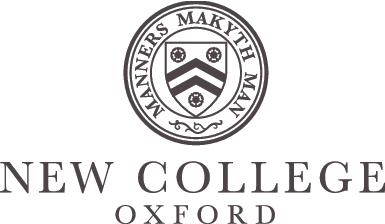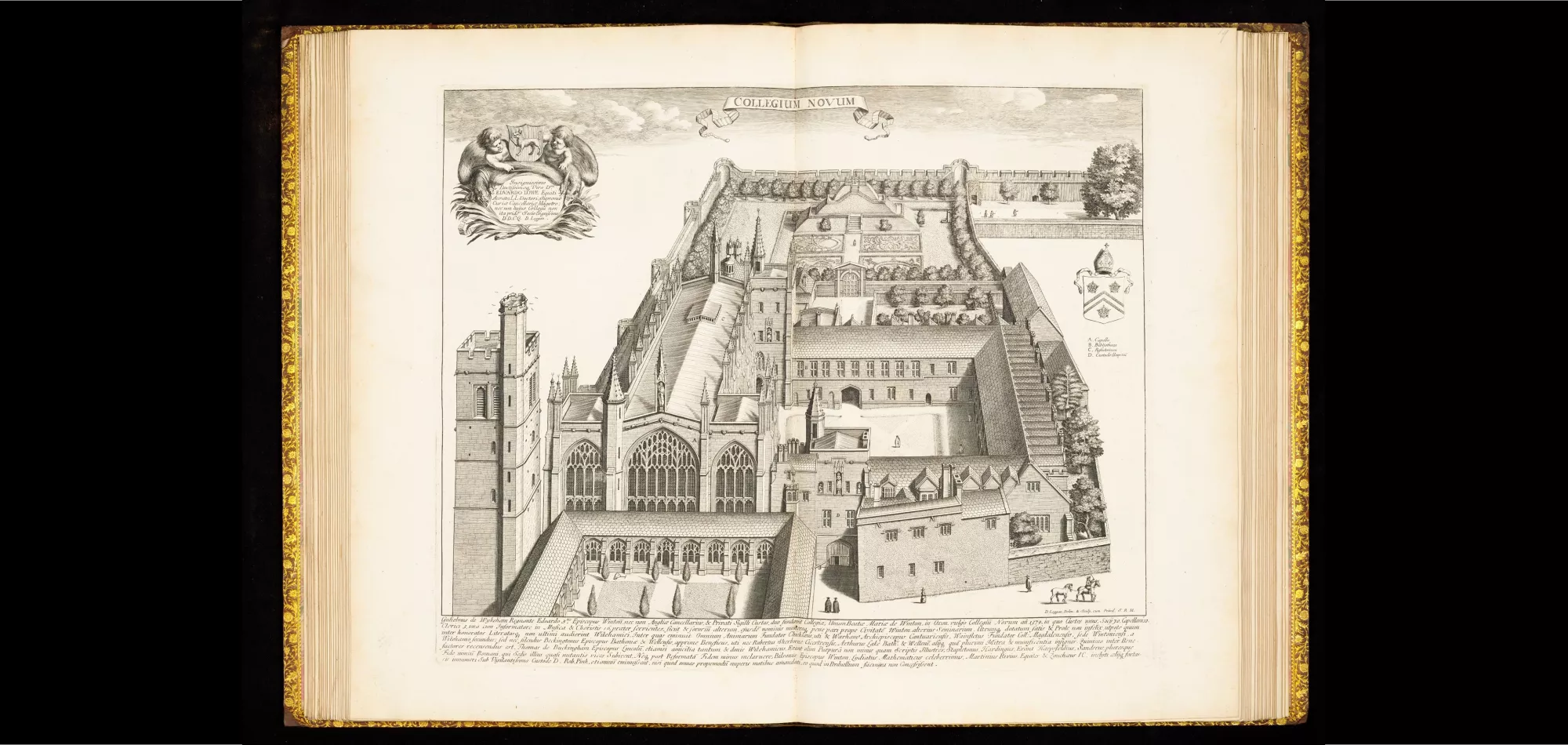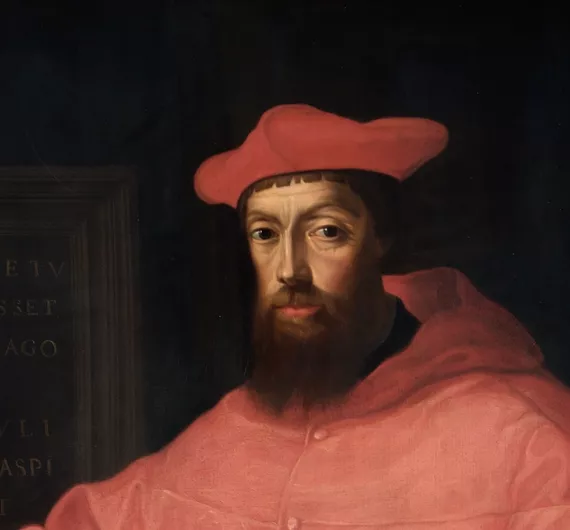Despite our name, New College is one of the oldest colleges in Oxford.
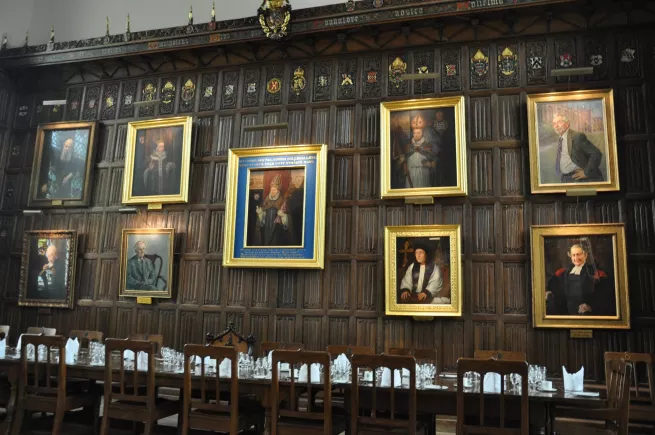
The Foundation
New College was founded in 1379 by William of Wykeham (1324-1404), Bishop of Winchester, as The College of St Mary of Winchester in Oxford.
It very soon became known as New College to distinguish it from an earlier Oxford college (Oriel, founded 1326) also dedicated to the Virgin Mary.
The Founder
William of Wykeham rose from modest beginnings in Hampshire to become Lord Chancellor twice, under both Edward III and Richard II. He allowed New College to adopt his private coat of arms and personal motto 'Manners Makyth Man'.
To the left, you can see the portrait which hangs in the Dining Hall to this day.
The Statutes
His statutes demanded a college comprised of a warden and seventy fellows, graduates and, a novelty at the time, undergraduates. Senior Fellows taught the juniors which marked the beginning of a formal tutorial system.
Every Fellow had to have been a scholar of Wykeham’s other foundation, Winchester College (1382). The provision of religious services, chaplains and choristers were central to Wykeham’s scheme; the Choir and Choir School persist to this day.
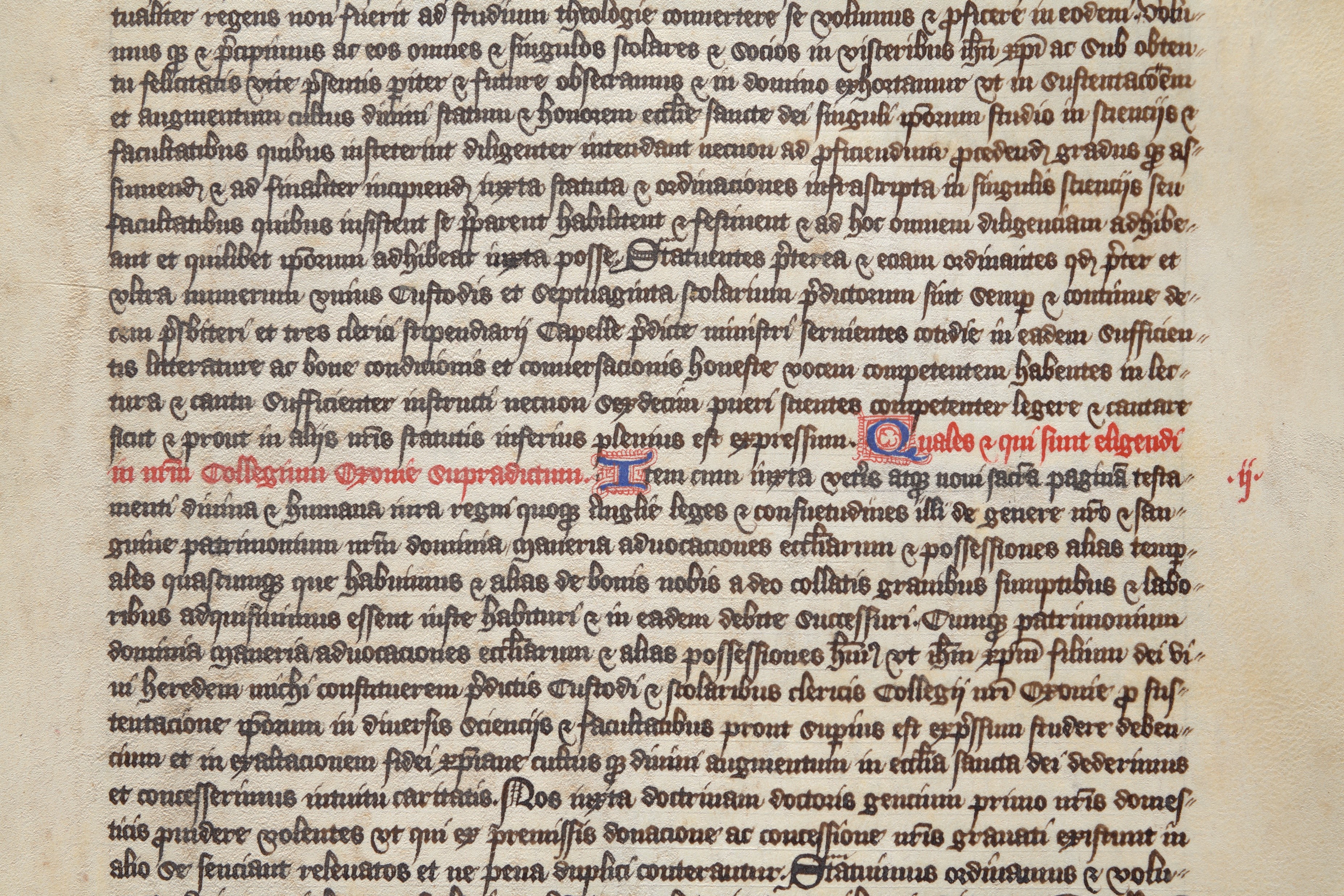
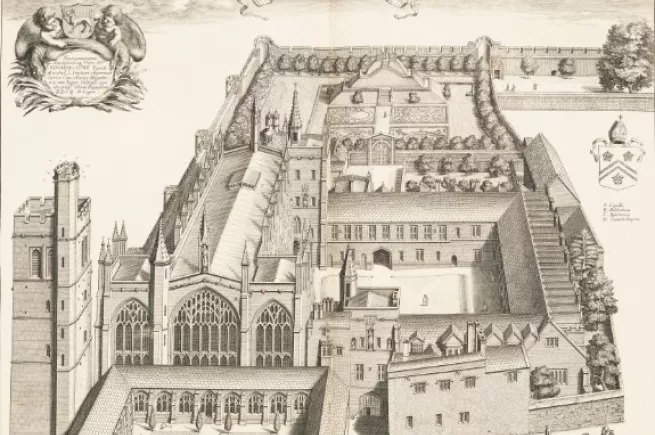
Original Buildings
Architecturally, New College was innovative in its design, in that it was all planned around an enclosed quadrangle (finished 1386). This was the first quadrangle of its type.
The quadrangle included all the essential elements required by the Fellows - accommodation, library, chapel, and dining hall.
In addition, there were lodgings for the Founder (now for the Warden), cloisters as a place for quiet reflection, and a Bell Tower.
These buildings remain essential parts of College to this day.
The Reformation
There were two great convulsions in the life of New College in the four hundred years after its Foundation - and then a period of quiet.
The first was the Reformation, which Warden London embraced, though the College remained divided.
With the accession of Mary I in 1553, New College became a centre of the Marian Counter-reformation. A number of Protestant Fellows were removed and there were many prolific pro-Catholic authors among the Fellowship - such as Nicholas Saunders, Thomas Harding, and Nicholas and John Harpsfield.
After Mary’s death, many Fellows fled to the Continent and engaged themselves in Catholic missionary work.
The English Civil War
The second was the Civil War. Oxford was the headquarters of the Royalist forces and Warden Pinck, himself a Royalist, helped to organise the defence of New College and Oxford after the outbreak of war.
When Oxford was captured, he was imprisoned by another New College man, the Parliamentarian Lord Saye and Sele.
When the Royalists came back, the College became part of the arsenal and the Cloisters a munition store.
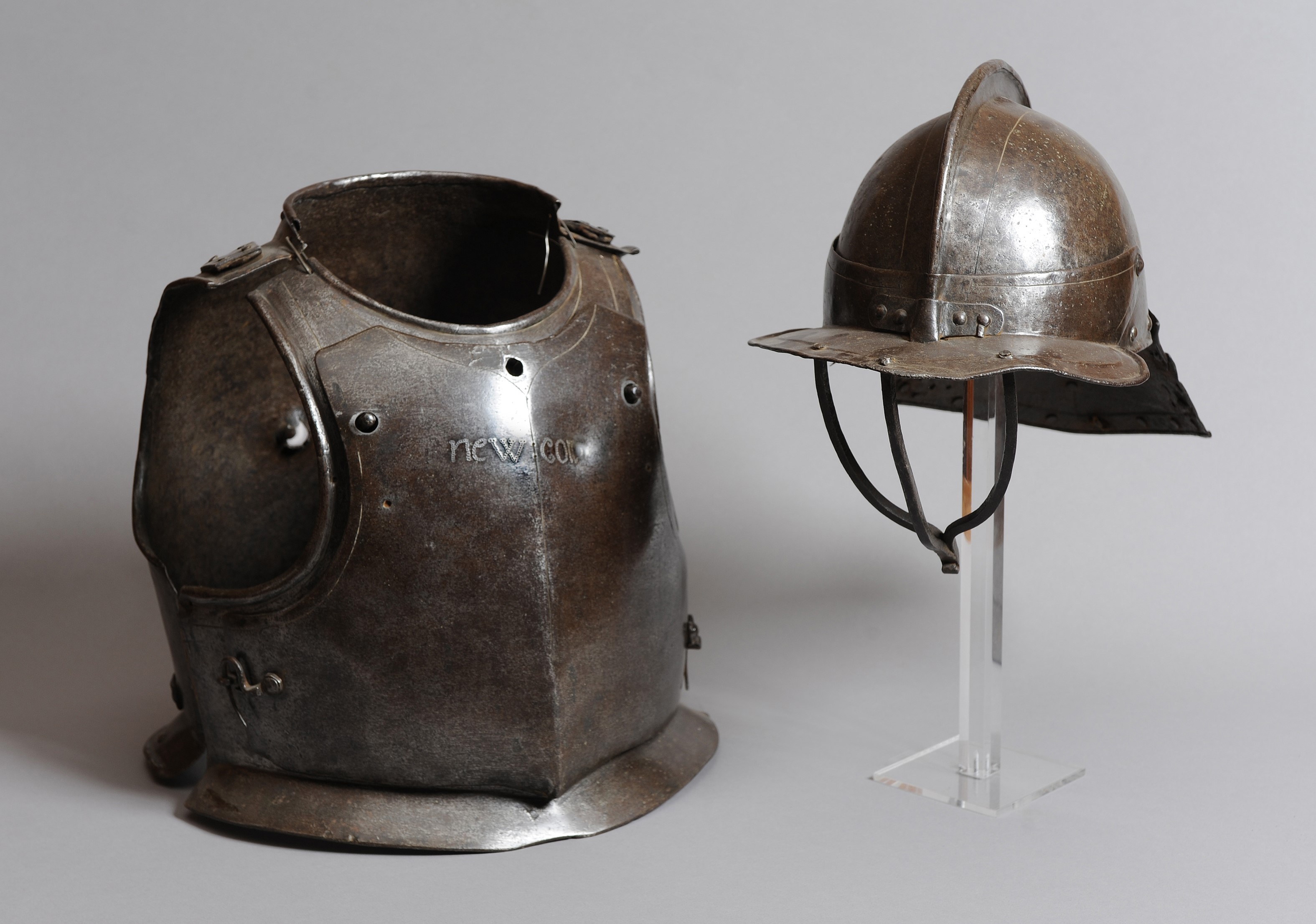
New College Civil War armour and helmet
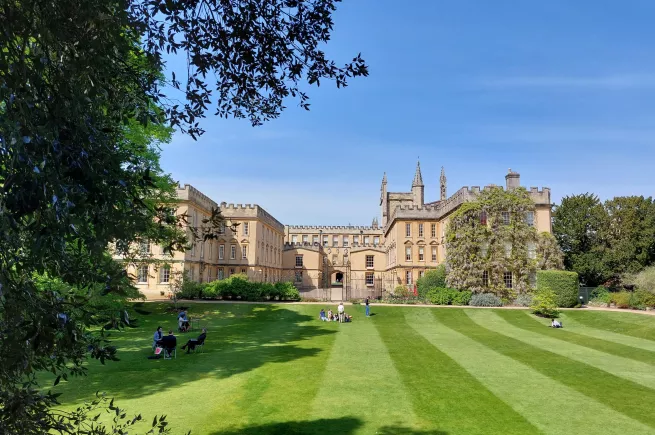
A Quiet Period
From the Restoration onwards, life in New College began to settle down.
However, once the College started to accept gentlemen commoners the need for additional accommodation became increasingly urgent, resulting in the building of the Garden Quad (1682-1708). Its 3-sided, open design is said to have been modelled on the Palace of Versailles.
Many Fellows lingered after taking their degrees, until appointed to lucrative college parishes at which point they resigned and could get married. Fellows were not permitted to marry until the 1860s, although Wardens had done so since 1551.
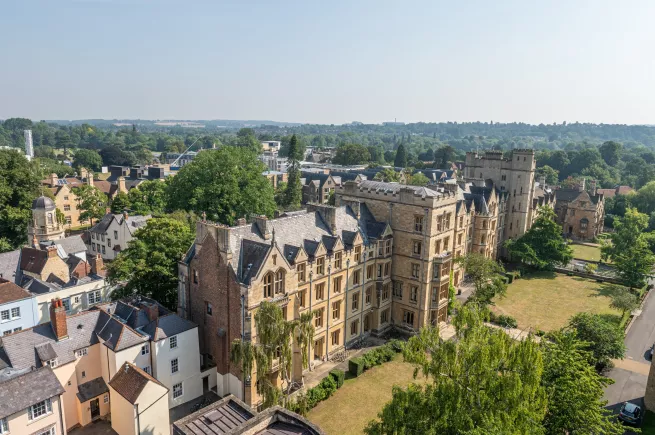
Further College Expansion
New College was prevented by its medieval statutes from adapting to rising demand for university education. Having been the largest college in 1379, by 1800 it was one of the smallest with at most twenty of the seventy fellows being undergraduates.
By the mid-19th century, Wykeham's statutes were out of step with the needs of higher education, and major reforms under new statutes in 1857 and 1883 started to create a recognisably modern college.
The Fellowship was opened to non-Wykehamists and the College started to freely admit undergraduates (nearly 300 were in residence by 1900). The New Buildings along Holywell Street were built (1873-96) to house them. Fellows were allowed to marry (1868) and began to have careers as researchers and tutors. New College pioneered intercollegiate lectures with Balliol (1868) and a new academic, intellectual, social and sporting prominence was achieved, especially under Wardens W. A. Spooner (1903-25), of 'spoonerism' notoriety, and H. A. L. Fisher (1925-40).

